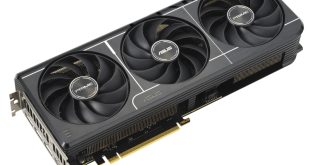Back with our fourth RX 5600 XT review, today we have assessed the ASRock RX 5600 XT Phantom Gaming D3. There's no RX 5600 XT Taichi model, so this is ASRock's flagship solution for this GPU. There is also a Phantom Gaming D2, which is a dual-fan cooler, while the D3 uses a triple-fan cooler.
Just this week, the Phantom Gaming D3 received a new BIOS, updating its memory speed to 14Gbps, in line with cards like the Sapphire Pulse and Gigabyte Gaming OC. From a pure performance perspective, this means essentially all three 5600 XTs with 14Gbps memory are on equal footing, with average frame rates almost identical to one another.
That said, I did notice the Phantom Gaming run about 20-30MHz slower than the aforementioned Pulse and Gaming OC cards, enough to make it 1% slower on average across all 11 games we tested. However, that difference is so trivial it is almost not worth mentioning – the simple fact of the matter is, any 5600 XT with 14Gbps memory and a 1750MHz boost clock is going to deliver the same gaming experience, and that is the case here.
ASRock has also built a very effective cooler for the Phantom Gaming. The overall look of the thing may not be to everyone's taste, but it runs cool, with edge temperature coming in under 70C which is always good to see. Even more impressive, however, is the fact it can maintain those temperature with such low noise levels. In my testing the fans barely spun past 1000rpm, resulting in a card that is, for all intents and purpose, inaudible unless your ear is mere centimetres from the fans.
In my view, that means the Phantom Gaming D3 is a very proficient card. I'll be honest, I'm not too keen on the aesthetic and I'd rather the backplate covered the full length of the card, but those are subjective points. On a technical level, performance is the same as other 5600 XTs, and it is an incredibly quiet cooler.
The main problem appears when we get to pricing. ASRock told us the D3 has a UK MSRP of £320, and currently CCL is selling it for a whisker under £318. This is £50 more expensive than the Pulse at £279, and RTX 2060 models are also available around £280. There's no denying the Phantom Gaming is very impressive from a technical standpoint, but is it £50 better than the Pulse? That price needs to come down for me, ideally to no more than £290.
Ultimately, that does govern my recommendation – if you find the ASRock RX 5600 XT Phantom Gaming D3 on sale, it is a very good card, with its low noise levels being a particular highlight. However, the Sapphire Pulse remains a continuous problem for more expensive 5600 XT partner cards due to its aggressive pricing and still very solid performance.
If you do want to pick up the Phantom Gaming D3, we found it for £317.97 from CCL HERE. Update: the PG D3 is currently £299.64, making it a more competitive option.
Discuss on our Facebook page HERE.
Pros
- Very quiet.
- Runs cool, despite fans spinning so slowly.
- Solid 1080p and 1440p gaming performance.
- Improved power efficiency compared to previous AMD GPUs.
Cons
- More expensive than the Sapphire Pulse 5600 XT and some RTX 2060s.
- RTX 2060 offers ray tracing.
KitGuru says: The Phantom Gaming is an impressive card no doubt about it, but its high price lets it down when you could buy the Sapphire Pulse, or competing RTX 2060 cards, for a fair bit less.
 KitGuru KitGuru.net – Tech News | Hardware News | Hardware Reviews | IOS | Mobile | Gaming | Graphics Cards
KitGuru KitGuru.net – Tech News | Hardware News | Hardware Reviews | IOS | Mobile | Gaming | Graphics Cards




